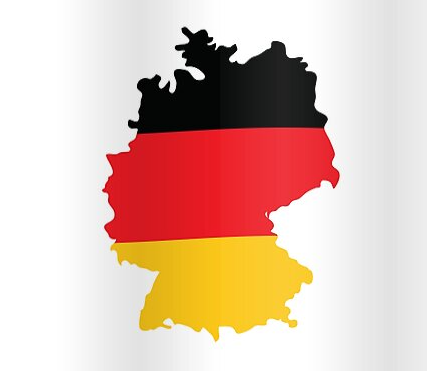Do you know about Austria National Color? Austria, a country nestled in the heart of Europe, is renowned for its rich history, vibrant culture, and stunning landscapes. Among the many aspects that contribute to Austria’s identity, the colors red and white hold a special place. In this article, we will delve into the historical, cultural, and symbolic significance of red and white in Austria, exploring their presence in various aspects of Austrian life, from the national flag to festivals, cuisine, and beyond.
Austria’s national colors, red and white, carry deep historical and cultural meanings that have been intertwined with the country’s identity for centuries. These colors can be seen adorning various aspects of Austrian life, from flags and festivals to sports teams and cuisine. Understanding the significance of red and white in Austria allows us to grasp the essence of the country’s heritage and the values it holds dear.
Historical Significance of Austria National Color
To comprehend the significance of red and white in Austria, we must delve into its history. The colors can be traced back to the Middle Ages when they were associated with the House of Babenberg, one of the prominent ruling dynasties of the region. The red and white colors were featured on the family coat of arms, and over time, they became closely linked with Austrian identity.
Throughout history, red and white have been prominently displayed during important events in Austria. From the Habsburg monarchy to the present day, these colors have symbolized power, courage, and resilience. The red and white banner has flown high, representing the nation’s sovereignty and unity during times of triumph and adversity.
National Flag of Austria
The Austrian flag, proudly displaying the colors red and white, is an embodiment of the nation’s identity. The flag consists of three horizontal stripes, with the top and bottom stripes being red and the middle stripe being white. This design, known as the triband, has evolved over the centuries to its present form.
The red color on the Austrian flag signifies bravery, strength, and the bloodshed by those who fought for the country’s independence.
The white color on the flag represents purity, peace, and the snow-capped Alps that dominate Austria’s landscape. Together, red and white reflect the harmonious coexistence of power and tranquility within the Austrian culture.
Austria National Color in Cultural and Symbolic Representations
Beyond the national flag, red and white hold cultural and symbolic significance in Austrian traditions, folklore, and art. These colors are often associated with national pride, unity, and identity. They can be seen in traditional costumes, where intricate embroidery and patterns showcase the vibrant combination of red and white threads. Festivals and parades feature elaborate decorations in these colors, further reinforcing their cultural importance.
Moreover, red and white motifs are prevalent in Austrian folk art, including paintings, ceramics, and woodwork. These artistic expressions capture the essence of Austrian heritage and celebrate the enduring spirit of the nation.
Red and White in Austrian Sports
Austria’s sporting achievements are also intertwined with the colors red and white. The national sports teams proudly wear jerseys in these iconic hues, representing the country’s athletic prowess on the global stage. From winter sports like skiing and ice hockey to summer sports like football and tennis, Austrian athletes wearing red and white have achieved remarkable success and brought glory to their nation.
The sight of fans waving red and white flags and chanting in unison creates an electric atmosphere during sporting events, showcasing the passionate support that Austrians have for their teams.
Red and White in Austrian Festivals and Celebrations
Austrian festivals and celebrations provide a platform to showcase the significance of red and white. Whether it’s the vibrant parades during Fasching (carnival) season or the solemn processions of religious events, these colors are prominently displayed through decorations, costumes, and flags.
One notable festival where red and white take center stage is the Danube Island Festival, a massive open-air music event held in Vienna. The festival attracts thousands of visitors who revel in the joyous atmosphere while being surrounded by a sea of red and white tents and stages.
Popular Culture and Austria National Color
Austria’s influence extends to popular culture, where red and white are frequently referenced in music, literature, and cinema. The vibrant Viennese waltz, with its graceful movements and enchanting melodies, captures the essence of these colors through its lively and romantic compositions.
Literary works often explore the symbolism of red and white, depicting them as metaphors for love, passion, and purity. In film, red and white imagery is often used to create visually striking scenes that evoke emotions and convey themes of patriotism, love, and resilience.
One notable example is the film “The Third Man,” where the contrasting colors of red and white are skillfully utilized to enhance the atmosphere and symbolism throughout the storyline. These cultural references in popular culture further cement the enduring presence of red and white in the Austrian psyche.
Conclusion
In conclusion, the national colors of Austria, red and white, hold deep historical, cultural, and symbolic significance. From the national flag to festivals, sports, cuisine, and popular culture, these colors serve as powerful symbols of Austrian identity, unity, and pride. They embody the rich heritage, resilience, and artistic expressions of the nation. Red and white are not mere colors but representations of the spirit and values that define Austria.
So, the next time you visit Austria, take a moment to appreciate the beauty and meaning behind the red and white motifs that grace the country’s landscapes, traditions, and cultural expressions.
FAQs
1. Why are red and white the national colors of Austria?
The colors red and white have a historical association with the House of Babenberg, a ruling dynasty of Austria. Over time, these colors became closely linked with Austrian identity and were eventually adopted as the national colors.
2. Are there any specific events where red and white are prominently displayed?
Yes, the colors red and white are prominently displayed during national celebrations, such as the Danube Island Festival and Fasching (carnival) season. Sporting events also showcase the colors, with Austrian athletes wearing red and white jerseys.
3. How are red and white incorporated into Austrian cuisine?
Traditional Austrian dishes often feature ingredients that are naturally red and white, such as red apples, white asparagus, and red currants. Desserts like the famous Sachertorte highlight the visual appeal of red and white combinations.
4. What is the significance of red and white in Austrian tourism?
Red and white are incorporated into Austria’s tourism branding and promotional materials. Landmarks like St. Stephen’s Cathedral and the picturesque alpine landscapes create a visual identity that attracts visitors to the country.
5. Can you provide more examples of red and white in popular culture?
Certainly! In addition to music and literature, red and white imagery can be found in Austrian cinema. Films like “The Third Man” skillfully use these colors to enhance the visual storytelling and convey deeper themes.
References
- Austria. (n.d.). In Flags of the World. Retrieved from https://flagspot.net/flags/at.html
- Austria – Cultural life. (n.d.). In Encyclopedia Britannica. Retrieved from https://www.britannica.com/place/Austria/Cultural-life
- Austria – Sports and recreation. (n.d.). In Encyclopedia Britannica. Retrieved from https://www.britannica.com/place/Austria/Sports-and-recreation

